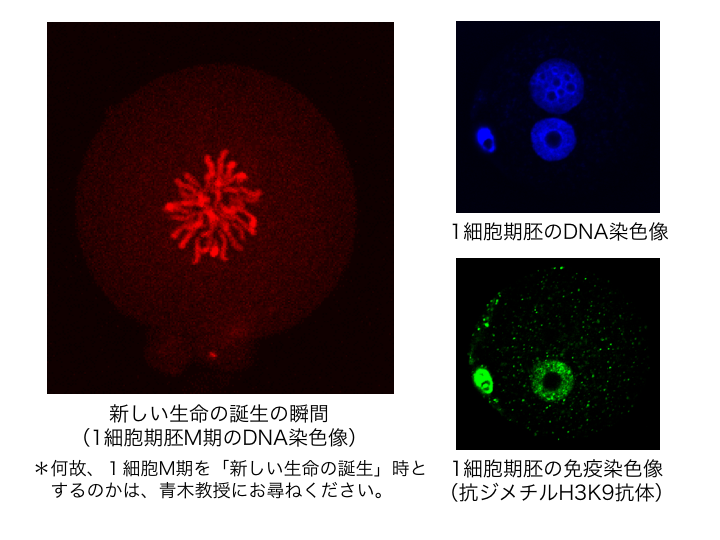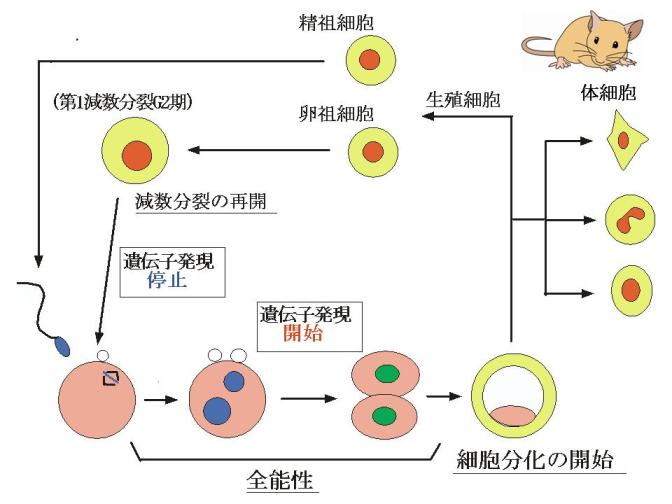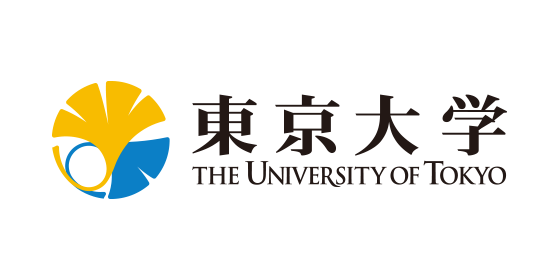We were chosen as the research project team.
Professor Fugaku Aoki of our laboratory has been appointed as the leader of the research project team of the “Program of totipotency”. The aim of this project is to clarify the mechanism of pluripotency acquisition and artificial control in vertebrate embryos.
In our laboratory, we are trying to clarify the mechanism of in vivo control of pluripotency from the aspect of gene expression.
For more details, please refer to the following website.
Mouse Group (Fugaku Aoki) ―
Research on the regulatory mechanism of gene expression reprogramming before and after fertilization
Life comes into being through fertilization, when an oocyte and sperm are joined. During the fertilization process, reprogramming of gene expression occurs.
Before fertilization, the oocyte is in a differentiated state, with meiosis-specific gene expression. The post-fertilization embryo, on the other hand, is in a pluripotent state, capable of differentiating into any cell type. The pattern of gene expression changes before and after fertilization, and these changes are called reprogramming of gene expression. The research theme of our laboratory is to clarify the regulatory mechanism of this reprogramming using mice.
In recent years, iPS cells have attracted attention in the fields of regenerative medicine and developmental biology. iPS cells can reset differentiated cells to a totipotent or pluripotent state. However, the mechanism by which it is reset is largely unknown. Therefore, this research is expected to contribute to the creation of efficient cloned animals or the development of safer and more efficient iPS cell creation methods.

Research Topic 1: Differentiation and Totipotency
The figure below is a schematic diagram of the flow of individual development.
First, the embryo is created by the fertilization of a sperm and an oocyte. The embryo at this stage is said to be “Totipotent“. The word “Totipotent” means that the embryo can become any kind of cell, which is the opposite of “differentiation,” which indicates that somatic cells have fixed characteristics. In fact, when a two-cell stage embryo is artificially divided into two and implanted into the mother, two independent children are born.

When development proceeds in a totipotent state, it reaches a time called the blastocyst. The embryo at the blastocyst stage has different roles on the outside and inside. Specifically, the outside of the embryo becomes the placenta, which will help the future development of the fetus in the mother’s uterus, and the inside becomes the part that will develop into the fetus.
At this time, they are still pluripotent. As these cells continue to divide, they eventually differentiate and become somatic cells that make up the cells of the body. Some of them differentiate into “germ cells” to produce the next generation of children.
Animals have been able to sustain life for a long time by repeating this cycle. One of the main themes of our laboratory is to clarify how somatic cells and germ cells differentiate and why only germ cells eventually become pluripotent.
Research Topic 2: Reprogramming of gene expression
In mammals, active gene expression occurs in the growing oocyte. However, as growth progresses, transcriptional activity decreases, and in grown oocytes, transcription is almost non-existent. After that, the grown oocytes resumes division and is fertilized when it reaches the mid-second meiotic division (MII stage). After fertilization, gene expression remains arrested for some time. Then, the first gene expression of embryonic origin occurs at different times in different animal species. After gene expression in the embryo begins, development proceeds according to the program of gene expression, and cells differentiate.

The growing oocyte is a differentiated cell that exhibits a meiosis-specific gene expression pattern. However, when the oocyte becomes a one-cell stage embryo after fertilization, it is a Totipotent cell. Therefore, it is thought that reprogramming of gene expression occurs between the time when the growing oocyte stops gene expression and the time when gene expression starts after fertilization (See above figure). One of the important themes of our laboratory is to clarify what is happening in this reprogramming and what environmental and genetic factors control it.

